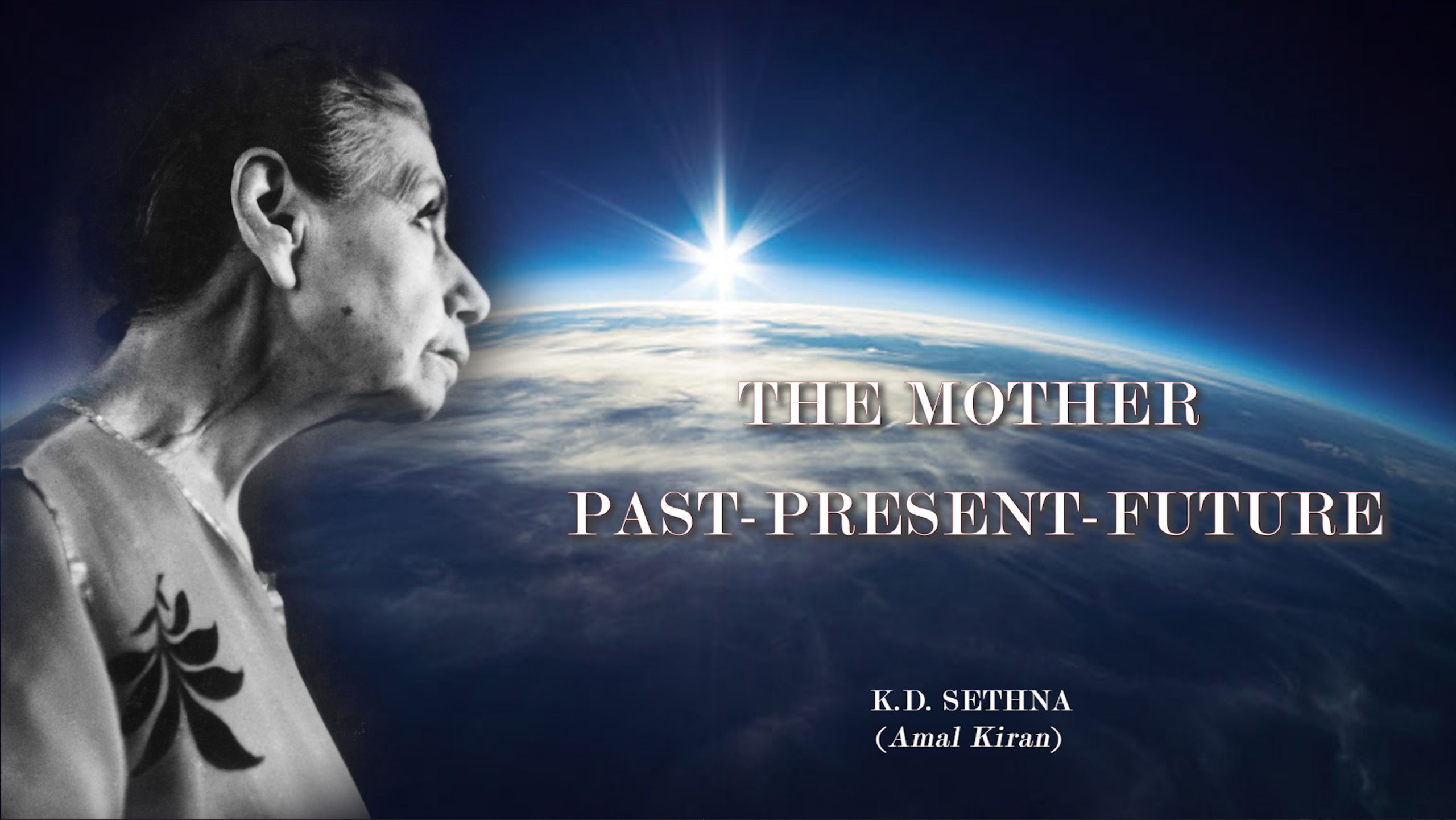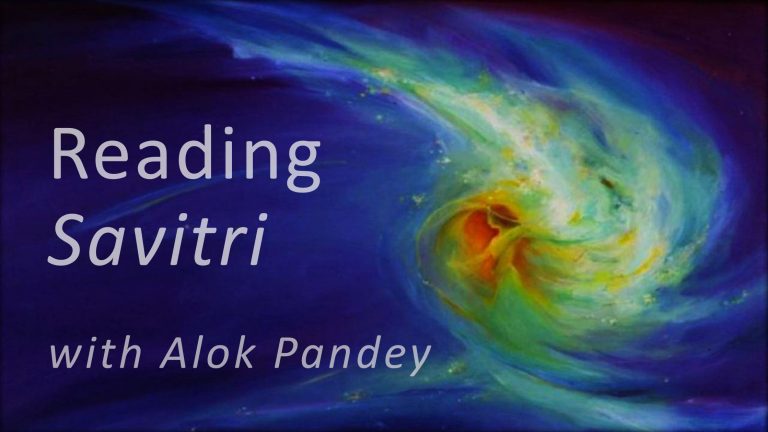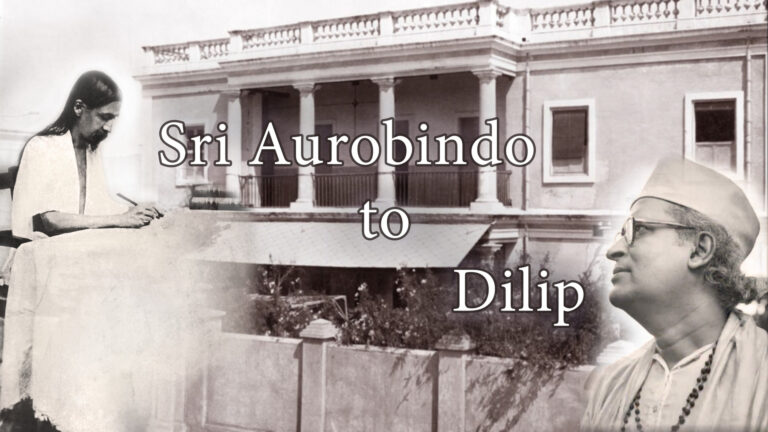Right up to the end the Mother is said to have fought indomitably for the work entrusted to her by Sri Aurobindo: transformation of her body so as to complete the Supramental Yoga and initiate a new Race. But at the same time we have been told of certain moments and moods during her last illness, where she appears helpless or hopeless — a striking contrast to her accepted role as Warrior of the Supermind. And the impression that she was helpless and hopeless reaches its acme when we come to think of her as leaving her body because she who had striven so gallantly for the Supramental Transformation had yet perforce to grow old and weaken and die, give up her mission and submit to the “laws of Nature”.
Are those moments and moods genuine discrepancies? Did the Inevitable Hour that has awaited all living creatures form alike the terminus of one whom Sri Aurobindo had chosen and commanded to effect not only “the death of Ignorance” but also “the end of Death”? Here are crucial questions and some followers of the Mother have been disturbed by a sense of irreconcilableness.
The questions are disturbing only if these followers see them in too simple a manner, take them too superficially and probe them without sufficient insight into the special character of an Avatar like the Mother or Sri Aurobindo.
Some of the seeming discrepancies are clearly due to a wrong perspective. Thus there is no call to doubt the indomitableness of the Mother’s spirit in what has been described as her prolonged pleading with her attendants to lift up her disabled limbs and make her walk. Here she suggests a pitiful picture of helplessness, if not even of absurdity, knowing as we do that on the first occasion when her pleading had been answered she had collapsed, her face had grown deadly white and twenty minutes had passed before she could recover. Why did she keep pleading after this nearly disastrous experience? Did she lose her poise and her common sense? The reason for her persistence is evidently the fear she had expressed to her attendants — that her limbs might get paralysed by disuse and prove unresponsive to her demand on them to be fighting-fit. In a state of exceeding feebleness she still wanted to get up and battle with the enemies of life. Here is no loss of poise or common sense, but exceptional courage, unremitting defiance of death.
What, however, shall we say when we hear that once she was “extremely restless”, “a bit annoyed with herself” and “dejected”, on finding she could not control her body for a time? Is this the Divine Mother whom we have known? Was she reduced to the merely human level of despair? Surely it is illogical to jump to a conclusion on the strength of our normal interpretation of appearances. Might not the terms that we have used be mere extensions from our ordinary reactions to the Mother’s psychological state? Many in the past have seen the Mother “angry”, “impatient”, “intolerant”. But did these adjectives do anything more than translate Mahakali’s drastic Truthward moods into human equivalents? Those moods can have no quality of our common anger, impatience, intolerance. The Mother has also undergone bodily ailments and felt drained of physical energy. Her body has even screamed with pain. Yet, when asked about it, she showed surprise, as if her consciousness had been elsewhere at the moments her body, which was like ours and shared our defects, had let out the screams. The restlessness, the annoyance, the dejection could very well have been the response her human-like body’s disposition made to a sudden adverse turn of the physical sadhana and could easily have had behind it the Inner Warrior’s profound sorrow — “psychic sadness”, as Sri Aurobindo has it — that the outer instrument should fail in endurance, fall short of the expected support. Here there may have been an idealism hurt to the utmost and moved to a deep self-censure: we need not conjure up hopeless pessimism.
The criterion which that idealism holds up is well caught in the exacting words the Mother uttered on May 28, 1969: “There is only one solution, the direct contact of the physical with the Supreme. That is the only thing… All the rest is misery…”.((( Bulletin, August 1969, “Notes on the Way”, pp. 81, 83.))) And side by side with the picture that we may paint of hopeless pessimism let us set this other the Mother herself has given us on May 31 in the same year 1969: “…yesterday…, in front of the horror in the perception of things, this body (that is the very opposite of being sentimental, it was never, never sentimental), this body wept…”.((( Ibid., p. 89.))) Is there any real break-down here? Did the heroic Mother we had known become a weakling? Nothing save idealism must once again come into paradoxical play.
Even putting aside the possibility of subjective interpretation and granting some real link with our “human, all-too-human” reactions, we may explain the seeming discrepancies. Now we have to go beyond the levels usually open to our understanding. We have not merely to cease being too simple and superficial: we have to penetrate to certain fundamentals of an Avatarhood like the Mother’s or Sri Aurobindo’s. We have to remember that the Mother was an Evolutionary Avatar: she represented all Nature, including human nature, in one part of her being, and assumed the problems and difficulties of the entire evolving earth. Times there could be, for such an Avatar, to pass through phases of mind and body which mirror man’s desperate agonies just as there could be a passage through phases echoing his intense exultations. We cannot apply any rule-of-thumb to the spirituality of an Avatar of evolution. Whatever is needed to be done for the sake of the Divine acting as both Evolver and Evolute would instantly be embraced, irrespective of human standards of what is spiritual and what is not.
Even Avatars who did not aim, as Sri Aurobindo and the Mother have done, at a complete organic change from one grade of evolution to another, a total divinisation not only of mentality and vitality but also of physicality, a transformed body ultimately functioning like a god immune to disease, decay and death, a body expressing in full a consciousness wholly converted from the twilit Mind to the noonday-splendoured Supermind — even the Avatars who never attempted like Sri Aurobindo and the Mother an integral evolutionary advance have flouted habitual conceptions of spirituality. We know how Sri Aurobindo, instead of sitting like a Himalayan sage serenely apart from world-issues, declared himself on the side of the Allies in World War II against Hitler and urged American participation versus Stalinism in the Korean conflict of 1950, and thus exposed himself in the one case to the charge of befriending the British who were still India’s imperialist masters when World War II broke out, and in the other case to the accusation that he was hand-in-glove with Washington and Wall Street. But thousands of years before him Sri Krishna had led Arjuna’s chariot, urged the mighty battle of Kurukshetra and called upon his beloved disciple to abandon all man-made Dharmas, take refuge in Him alone and fight with a high-stationed soul to bring about a New Age of history. In addition, Sri Krishna was an astute hand at politics and lived in kingly purple and gold rather than as a naked ascetic. Yes, past Avatars too have kicked over the traces of conventional norms of spirituality. They have apparently “fallen” into human ways in order to work their divine purposes. They had come to carry forward man’s career on earth, although their ultimate goal for him was a Beyond. Through human ways, whenever necessary, they gave a push to that career. How much more might those ways be required at times by Avatars whose goal is earth’s own fulfilment, a consummated Here and Now, a taking up of all Nature’s imperfections and a furthering of her evolutionary instruments?
Nor must we forget the Mother and Sri Aurobindo were Evolutionary Avatars because they embodied the hitherto — unmanifest Supermind. And when so new a dynamism of the Divine is at work and thus their spirituality itself is a special one, who can assess their operations with the yardstick of the past, be the past ever so “spiritual”? The Supermind by its basic novelty has the right to fly in the face of all expectations. If it serves its ends that the Avatar of it should not only look but be “restless”, “annoyed with herself” and “dejected” on a particular occasion, how can we conclude her non-divinity on that score? We are in no position to gauge what might be shaped out by such contrary means. More than in any other situation of sadhana we need to keep before us in confronting the Supramental Avatar those lines of Sri Aurobindo:
This too the Supreme Diplomat can use,
He makes our fall a means for greater rise.((( Savitri: A Legend and a Symbol, SABCL, Vol. 28, p. 34.)))
And, when we discern in the Evolutionary Avatar the Avatar of the plenary Supermind, we must stop thinking that the Mother had to submit willy-nilly to any “laws of Nature”. Sri Aurobindo has characterised all the planes of existence and consciousness up to what he calls the Overmind as aparardha, the lower hemisphere of manifestation, while the parardha, the higher hemisphere, starts from the Supermind. The “laws of Nature” hold, though in different degrees, for everything below the Supermind. Nature extends thus far and no further: the Supermind is Super-nature. With the Supermind we do not have the Cosmic but the Transcendent: there automatically the laws which we may designate cosmic habits come to an end. And when the Supramental Divine becomes incarnate, he or she brings a total freedom, and absolute power. Whatever diminution of freedom, whatever decrease of power there may be in their world-work is of their own choice. Indeed they do diminish and decrease themselves, sometimes with terrible results, because they take upon their beings the cosmos’s shortcomings so as to work them out in the light of the cosmos’s archetype, the universe’s original truth, that shines forth in the Supermind and is obscurely “involved” in the Inconscient from which the world has evolved. Yes, the Supramental Divine has to be very much like us in order that we may at last be supramentally divinised. But let us make no mistake: there is here no inevitable submission at all.
Doubtless, the frailty and the suffering are real, they are truly undergone, they are no dramatic pose: were they something merely put on, the ultimate conquest of them would have no sense for us and be just a splendid show. But alongside the actual experience of them the Supramental Divine keeps intact the freedom and power intrinsic to the Transcendent. To quote Sri Aurobindo:
A Magician’s formulas have made Matter’s laws…
All here can change if the Magician choose.((( Ibid., Vol. 29, p. 457.)))
Any minute the Transcendent can surmount the bondage that has been accepted in all its grim actuality. And there is always a voluntary act accompanying the appearance of both suffering and frailty. Death itself is determined by that act. In each phase of the Mother’s life there is a supreme unfettered “Yes” allowing the play of Nature. A luminous decision goes with all occurrences — and what is accepted, no matter how undivine or how inescapable it may seem, has behind it the highest wisdom no less than freedom and power.
Of course, we have to take account of the Mother’s existing on several levels: she the incarnate Avatar from the Supermind has an instrumental being which is totally surrendered to the supramental Will within her, and when she speaks from her body-poise she refers always to the Lord, the Supreme Presence, the Absolute as governing her fate. But this supramental wisdom-freedom-power is identical with even her body-poise in the latter’s essential self. In the closing passage of the talk she had with a disciple on August 30, 1972,((( Bulletin, November 1972, “Notes on the Way”, p. 87.))) we see the interplay, the duality and yet the unity, between the supramental instrument and the supramental Transcendent, both of whom are she. “Very often, very often,” she says, “I ask the Lord: How can I help now that I can no more see clearly nor speak clearly? It is a state… the body does not feel the decline! It is convinced that if tomorrow the Lord wanted it to take up again its activities, it would be able to do so. The Strength is there (Mother touches her arms, her muscles), at times a mighty strength!…. Why!… The condition is willed so that… I might be left quiet.” The disciple tells her: “But you know this is surely a willed state because I myself have the feeling, so far as I can perceive in my small measure, that in your immobility you are like a tremendous generating centre.” She confirms his intuition by answering: “Yes, that I know. That I know. Tremendous. Yes, a Force.”
We could not have a more distinct pointer to the capacity of the transcendent “Magician” within the Mother to change the material “laws” made by his own “formulas”. The seemingly old and infirm body is declared to feel no “decline” and it knows in its very substance (“arms”, “muscles”) that at any moment it can be active and effective by the Transcendent’s will. Half-humorously the Mother understates her condition, saying it is necessary for the purpose of letting her remain quiet. But it is really a situation needed at once to bring the problem of transformation to its acutest and gather the transformative energy to its most concentrated. And all the pain, weakness, vulnerableness are revealed to be a quite consciously veiled omnicompetence.
Crass casualty and blind fatality can never be deemed legitimate factors in the Mother’s life in the same way that they are in our lives or even the lives of the great seers, saints and yogis of the past. The very Avatars of old have walked under their shadow to some extent, for they did not incarnate the plenary Supermind. If death necessarily took toll of the Mother as it does with all infirm old age, if it was not chosen by her for reasons of her own, then the Mother was not what Sri Aurobindo had visioned and proclaimed her to be. Are we prepared to believe that?
As to what her reasons for “dying” were, we may here simply say: “Her aim was to install in the world a Divine Body and thereby aid her children to get divinised. She has given up her present physical sheath in order somehow to bring closer, to concretise further, the secret Supramental form that she has spoken of as awaiting materialisation through the labour of her Aurobindonian Yoga.”




About Savitri | B1C1-09 Advent of the Divine Mother (p.4)